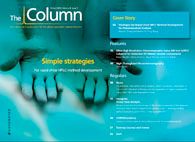Oil spill
The impact of the oil spill in the Gulf of Mexico two years ago has had a devastating effect on the area.

The impact of the oil spill in the Gulf of Mexico two years ago has had a devastating effect on the area.
A team of scientists from the US have examined 11 sites hosting deep-water coral communities 3 to 4 months after the well was capped.1 At one site approximately 11 km southwest of the well, coral colonies exhibited signs of stress, including tissue loss, sclerite enlargement, excess mucous production, bleached commensal ophiuroids and covering by brown flocculent material. Nearly half of the 43 corals imaged at that site displayed evidence of impact.
To confirm their findings the team also conducted an analysis of the oil to determine its source. Using two-dimensional gas chromatography they were able to find strong evidence that the oil originated from the well.
The team concluded that the oil spill has had a severe impact on the deep-water ecosystems that it is still being felt up to the current time.
1. Charles R. Fisher et al., Proceedings of the National Academy of Sciences, doi: 10.1073/pnas.1118029109 (2012).
This story originally appeared in The Column. Click here to view that issue.
Analysis of PFAS in Milk by LC-MS/MS
May 15th 2025Dairy milk is one commodity that can be impacted by environmental contaminants, such as PFAS, so it is important to implement extensive, robust, and accurate testing. In this work, a sensitive and reliable method was developed for the analysis of PFAS in milk by LC-MS/MS at levels as low as 0.01 µg/kg.

.png&w=3840&q=75)

.png&w=3840&q=75)



.png&w=3840&q=75)



.png&w=3840&q=75)











